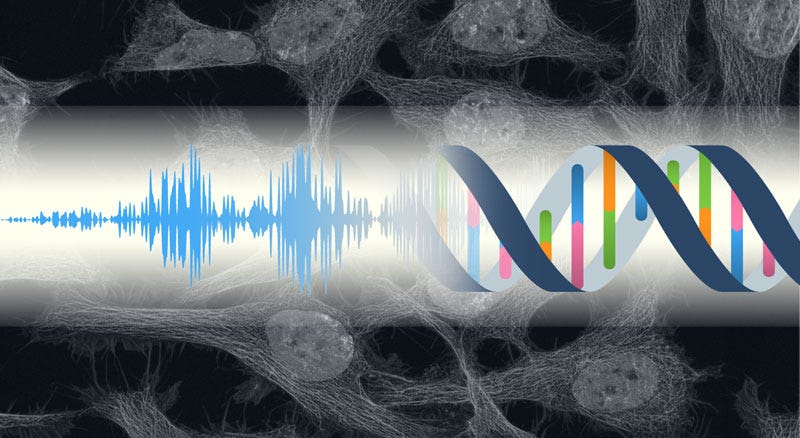CONFIRMED: Your Cells Can Hear!
Revolutionary Insights from Kyoto University and What It Means for Solfeggio Frequency Enthusiasts
A groundbreaking study from Kyoto University (April 17, 2025) has unveiled that audible sound waves—those within the human hearing range—can directly influence cellular behavior. By delivering sound through a transducer to cultured cells, researchers found that sound not only registers in our ears but also at the subcellular level, affecting gene expression and cellular activity.
In the Image: The fundamental relationship between life and sound. (KyotoU/Kumeta lab)
Key Discoveries
Suppressed Fat-cell Formation: The acoustic stimulation notably inhibited adipocyte differentiation—the process by which pre-fat cells develop into fully formed fat cells.
Genetic Responsiveness: Researchers identified around 190 sound-sensitive genes, along with changes in cell adhesion activity and insights into how sound signals permeate for cellular effects.
Medical Promise: Since sound is inherently non-invasive, immediate, and material-free, this method shows immense potential for medicine and healthcare applications.
What this means for Solfeggio Frequencies enthusiasts
This cellular-level revelation mirrors and invigorates the spiritual and therapeutic claims surrounding Solfeggio frequencies. While the Kyoto team didn't test Solfeggio tones directly, their work substantiates the notion that sound—in particular, precisely engineered auditory vibrations—can act as a meaningful, physiological signal.
What scientific findings do we already have on Solfeggio frequencies?
Healing and Emotional Shifts: For instance, a creative music-based Solfeggio study found that listening to a composition in the Solfeggio scale immediately lowered anger and anxiety, suggesting emotional modulation via sound.
Well-being through Chanting and Frequencies: A comprehensive review highlighted that chanting and Solfeggio tones can reduce mental agitation, alleviate physical and emotional distress, and inform sound therapy design.
Animal Cognition & Exposure: Another study using Solfeggio-frequency music on zebrafish noted measurable effects on cognitive responses—hinting at cross-species resonance effects.
Implications & What This Means for You
This Kyoto discovery offers credible scientific ground to the idea that sound isn’t just spiritual—it’s biologically active. The findings empower Solfeggio-focused creators, practitioners, and listeners to explore:
Tailored Sound Therapy: Could a study soon clinically prove that specific Solfeggio tones intentionally influence cell behavior—perhaps aiding in metabolism balancing or stress reduction?
Clinical Integration: Imagine a future where therapeutic protocols include sound to modulate tissue behavior non-invasively.
Research Horizons: This opens pathways for controlled studies on Solfeggio frequencies’ direct cellular impacts, gene expression changes, or tissue-level effects.
What action can you do today?
If you have not done so already, subscribe to our newsletter to make sure you stay informed with all of the latest developments on how sound and particularly Solfeggio frequencies can be used to improve wellbeing and advance medical therapeutics.
Begin experimenting on your own by re-tuning all of the music consume to any of the Solfeggio frequencies in real time. Discover free and paid apps that make this fast and easy here: https://solfeggiofrequencies.org/apps
Share this valuable information with your relatives and friends.



✨️🎶✨️
This information is awesome!! Thanks for sharing!! ❤️🙏🏻